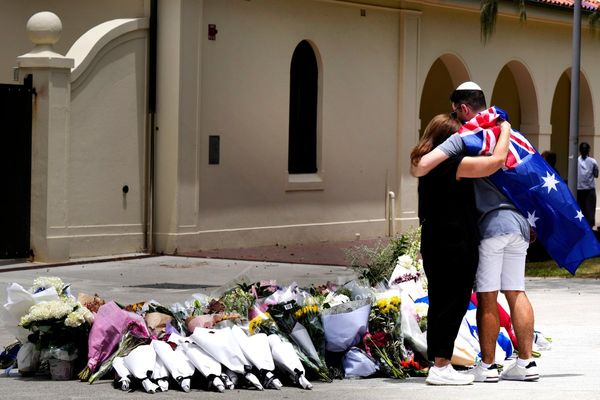
Liberal leader Peter Dutton made a good point about the lack of planning to house the wave of extra migrants we’re getting this year, but keeping a straight face while doing so was a real achievement.
Between 2004 and 2006, when he was Minister for Workplace Participation, Australia’s net overseas migration jumped from 142,580 to 277,340, but planning to house them? Alas, there was none.
Nor was there any when he was in opposition and Labor was in government, and then again when he became Minister for Immigration and Minister for Home Affairs. For all of those years, net immigration averaged 200,000 a year.
Oh, but there will be planning in future when he becomes PM, just wait and see!
The Treasury forecast in the budget papers of 400,000 net overseas migration this year and 1.5 million over five years, is the difference of arrivals and departures, and is a one-off catch-up after the COVID pandemic.
Demographer Professor Peter McDonald also points out it’s the net of arrivals and departures, and that departures are unusually low because those who were likely to leave had already left during the pandemic.
Net overseas migration is likely to return to normal from next year. Professor McDonald says that means 190,000 a year, while the budget papers say it means 235,000 – which is well above the 15-year average of 200,000.
Both parties’ costly disconnect
But we start these next few years sadly well behind scratch in the handicap race for a pleasant life: For decades neither side of politics has connected migration policies with housing and infrastructure, with results that are obvious to all.
An average intake of 200,000 migrants per year for 17 years has resulted in Australia’s population growing from 20 million to 26 million since Peter Dutton first joined John Howard’s ministry in 2004. Over that period, population growth has produced average growth in GDP of 2.4 per cent a year, while per capita GDP growth has been 0.8 per cent a year.
We need immigration to replace the wave of retiring Baby Boomers. The problem is not the population growth, but the fact that it isn’t linked to housing and infrastructure.
Over the same 15 years, according to ABS data, engineering construction work done by the private sector each quarter has grown at an average annual rate of 0.5 per cent and by the public sector at 0.3 per cent, a fraction of the growth in population.
The number of dwelling units commenced has not grown at all – it was 41,013 in the December quarter of 2007, and 41,598 in the December quarter of 2022.
The absence of an effective government housing policy plus inadequate infrastructure spending to go with immigration policy has meant that, despite strong economic growth and low unemployment, it’s getting harder and harder to live here.
To misquote Thomas Hobbes, life in Australia for many has become solitary, poor, nasty, brutish and long (it was short in Hobbes’ days). In his book Leviathan Mr Hobbes was pushing the idea of authoritarian government, and that memorable phrase was meant to describe what happens in the absence of it.
Wanted: More and smarter government
The absence of government is the root of our problem now. The question is: Who has benefitted from the economic growth that has been fuelled by population growth?
Company profits have grown by an average of 8.4 per cent a year over the past 15 years and the number of billionaires has increased at a compound annual growth rate of 6 per cent.
For everyone else, unemployment of 3.5 per cent is good, but real wages have collapsed, interest rates have increased 11 times in 12 months, it’s impossible rent a place to live – and if you do find one you can’t afford it. It’s getting impossible to find a doctor or just move around the city.
So Peter Dutton was able, correctly, to say in his budget reply speech: “Cities, towns and suburbs are already choked with congestion.”
With population growing by 1.76 per cent a year, infrastructure spending by less than a third of that and housing not at all, there was always going to be an infrastructure and housing deficit, and so there is.
As for the future, the number of residential construction approvals has been averaging about 16,000 per month for a few years but has now dropped to 12,000 a month this year, partly because of a lack of workers.
It’s a classic catch-22: Immigration is spurting to cover the staffing shortages caused by the pandemic, but there is nowhere for the new arrivals to live because there aren’t enough tradies yet to build the houses. Meanwhile the extra demand and lower supply is making life difficult for those already here.
Two-step solution
So it looks like the housing deficit will continue for a while yet. The Albanese government’s $10 billion Housing Future Fund will build 6000 houses a year, which will take care of three months’ worth of migrant intake.
Two things need to happen: Governments, both state and federal, must find a way to fund a lot more public housing and infrastructure, and they need to encourage more private housing development, especially medium density.
As it happens, at the same time as neo-Nazis were protesting about immigration over the weekend, the good people of Frankston were protesting against a plan to build medium high-rise apartment blocks to house them.
Demographer Simon Kuestenmacher suggested in this TND column that local councils should each be given a housing target to streamline the process for planning, which currently takes six to eight years for an apartment building.
He wrote: “Federal funding gets withheld if they fail to approve the adequate number of dwellings. If they fail again the following year, the council gets put under administration.” Go, Simon!
Also, state governments should stop taxing developers for the cost of infrastructure. This is a government responsibility, and putting it on developers makes the cost of new developments prohibitive.
And finally, all of this should be partly paid for by confining negative gearing to new houses only, not existing ones. It drives up the price of existing places and provides no incentive to invest in new ones.
Oh, and governments should stop giving money to first-home buyers, which only adds to the price, and that includes Peter Dutton’s dopey idea in his budget reply speech to allow Australians to use their super to buy their first homes.
That will just go on the price as well, and burgle their retirement.
Alan Kohler is founder of Eureka Report and finance presenter on ABC news. He writes twice a week for The New Daily







